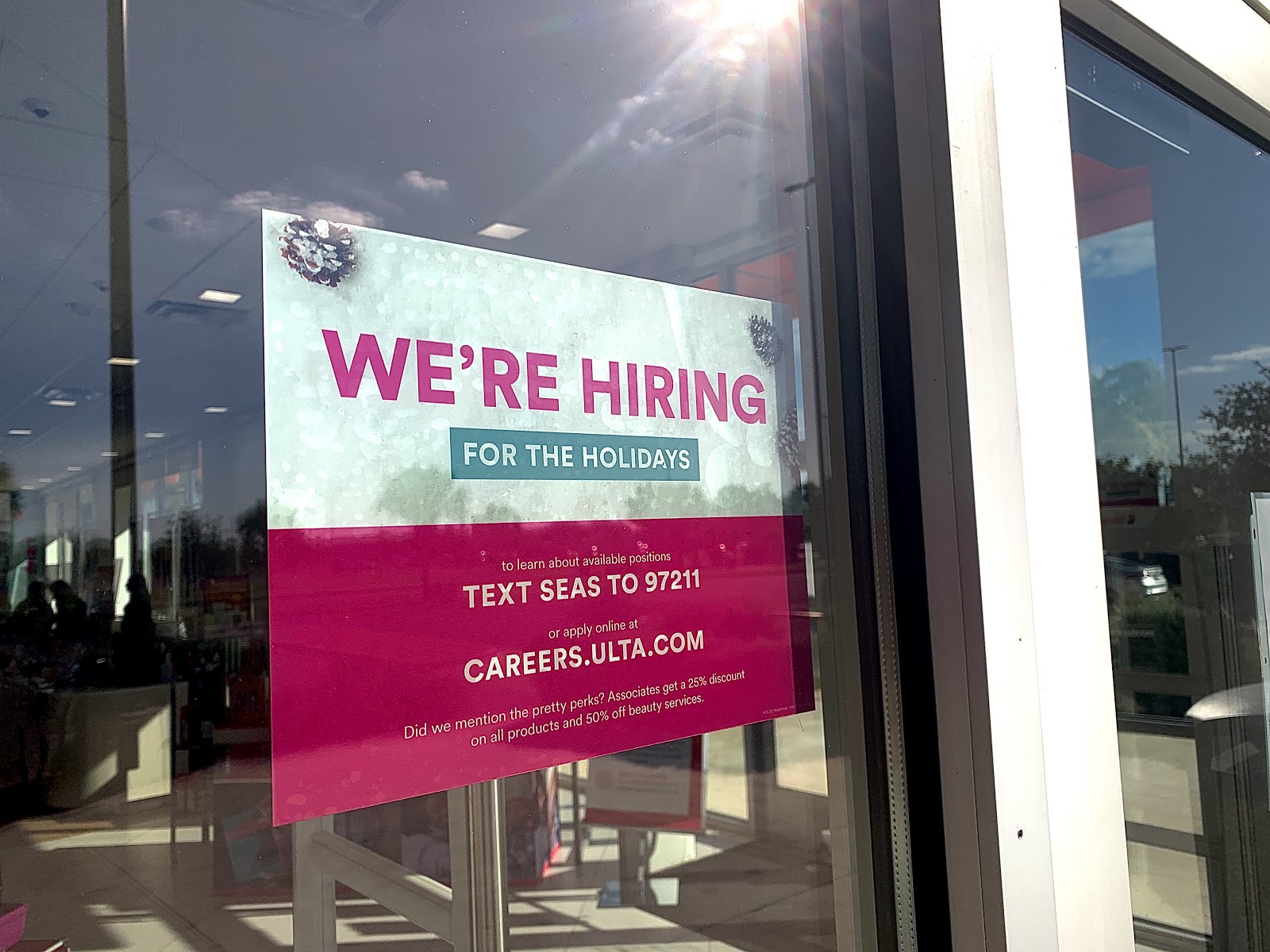
Jacqueline Wallace/The Rider
Brigitte Ortiz | THE RIDER
Before the pandemic struck early this year, U.S. unemployment was at 4.4%. After one month, unemployment peaked at 14.7%. Two UTRGV professors say it will take months for unemployment and the economy to return to pre- COVID-19 days.
Salvador Contreras, an economics and finance associate professor said the Texas unemployment rate was 7% in August and increased to 8.3% in September.
“So the labor market has continued to improve, and so we’ve seen a rapid decline in the unemployment rate in Texas and in the U.S. from April to this day, although September was slightly worse than expected,” Contreras said. “But, however, going forward these numbers are likely to continue to improve so you never want to look at a number at any given month and draw strong conclusions. You want to look at a trend, and the trend here is that this is sliding down. Employment is indeed improving. There’s more jobs being created as time progresses.”
He said the U.S. was in its 10th year of economic expansion. The unemployment rate was roughly at 3.5% at the beginning of the year.
“You couldn’t have asked for a better labor force than we had going into the month of March,” Contreras said.
Asked how the rise in unemployment affected the Rio Grande Valley, he replied that it is highly dependent on retail.
“So the [malls] in the RGV, for example, shut down,” Contreras said, referring to La Plaza Mall in McAllen and the Rio Grande Valley Premium Outlets in Mercedes. “Many stores shut down, many restaurants shut down and this sector represents, you know, some 12% of total employment in the RGV. So, this led to a huge rise in the unemployment rate.”
He said the groups most affected in Texas and in the U.S. were Blacks and Hispanics, particularly Black and Hispanic women, young people and people who work in industries that pay lower wages.
Contreras said it will take time for the economy to go back to pre-COVID-19 days.
“There’s still a lot of churn, at least we can see this in the number of unemployment claims we see every week,” he said. “Although the number of people filing unemployment [claims has] been decreasing over the last few months, it’s still historically high or above average compared to the pre-COVID period. So, we know that there’s still a lot of churn. There’s still a lot of workers who are going into jobs, being released, going to another job. We know there’s still a lot of this up and down that is happening in the economy, so it’s likely to take some more time for this to work itself out. Again, remember, we’re not free from the COVID-19 pandemic.”
Andre Mollick, chair and professor of the Economics and Finance department, said he has been following the national unemployment rate.
“The national unemployment rate, the latests one from the September report, was 7.9% right,” Mollick said. “And this is coming down a lot from the peak, the shock caused by the coronavirus in April.”
He said the unemployment rate in Texas, as of September, was 8.3% . The national trend is slightly lower.
“So we are on the downward path, which is good because the recovery is continuing which is a good thing,” Mollick said. ” So, I don’t do forecasts of unemployment retest tell you what exactly the rate is going to be, but it’s coming down. So, the last one was 7.9 and before was 8.4, so it came down .4%. So, the one that you have now for the state is 8.3, so likely to be a little lower than 8%. ”
He said a graph that shows the trend from 2000 to 2020 is on the U.S. Bureau of Labor Statistics website.
“So, what’s happening is this: If you look at 2020, before the pandemic, we were a little below 4%, which was 3.5, 3.6 at the beginning of the year, right,” Mollick said. “So, then there is the pandemic in March and the unemployment rate jumps, In March, it was still 4-4, but then in April it goes to almost 15. So, is you see there’s [an] increase, that was the result of the pandemic.”
“Now, if you go back to the previous recession in the U.S., you have the 2008-2009 and you can see also unemployment moving up. It was about 5%, it went to 10% and then started to decline. This is a little lower than the figure that you are mentioning [8.3%], but you know it’s because it’s the same trend. The trend is the labor market. When you have negative news, which is a huge recession like we had in 2008-2009, and now the pandemic and now the unemployment rate spikes, but in this case of the move up is a lot higher than the one that we had in the global financial crisis which is incredible, right. And then you can see the gradual movement to the downside after the 2008-2009 shock, but it took many years to go back to the 4%.”
For updates on the latests unemployment rates, visit https://www.bls.gov/ or https://texaslmi.com/.






